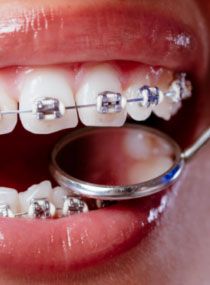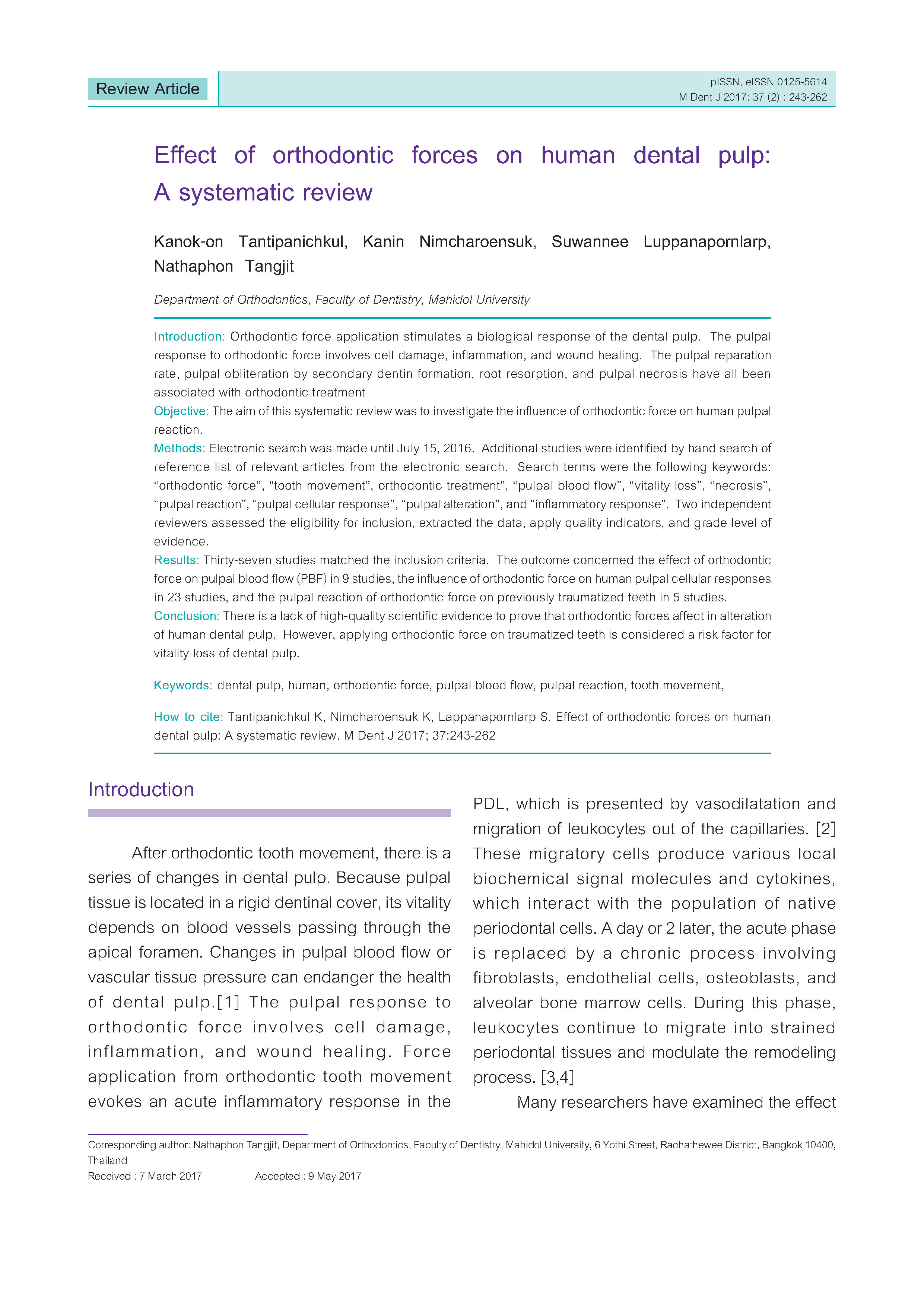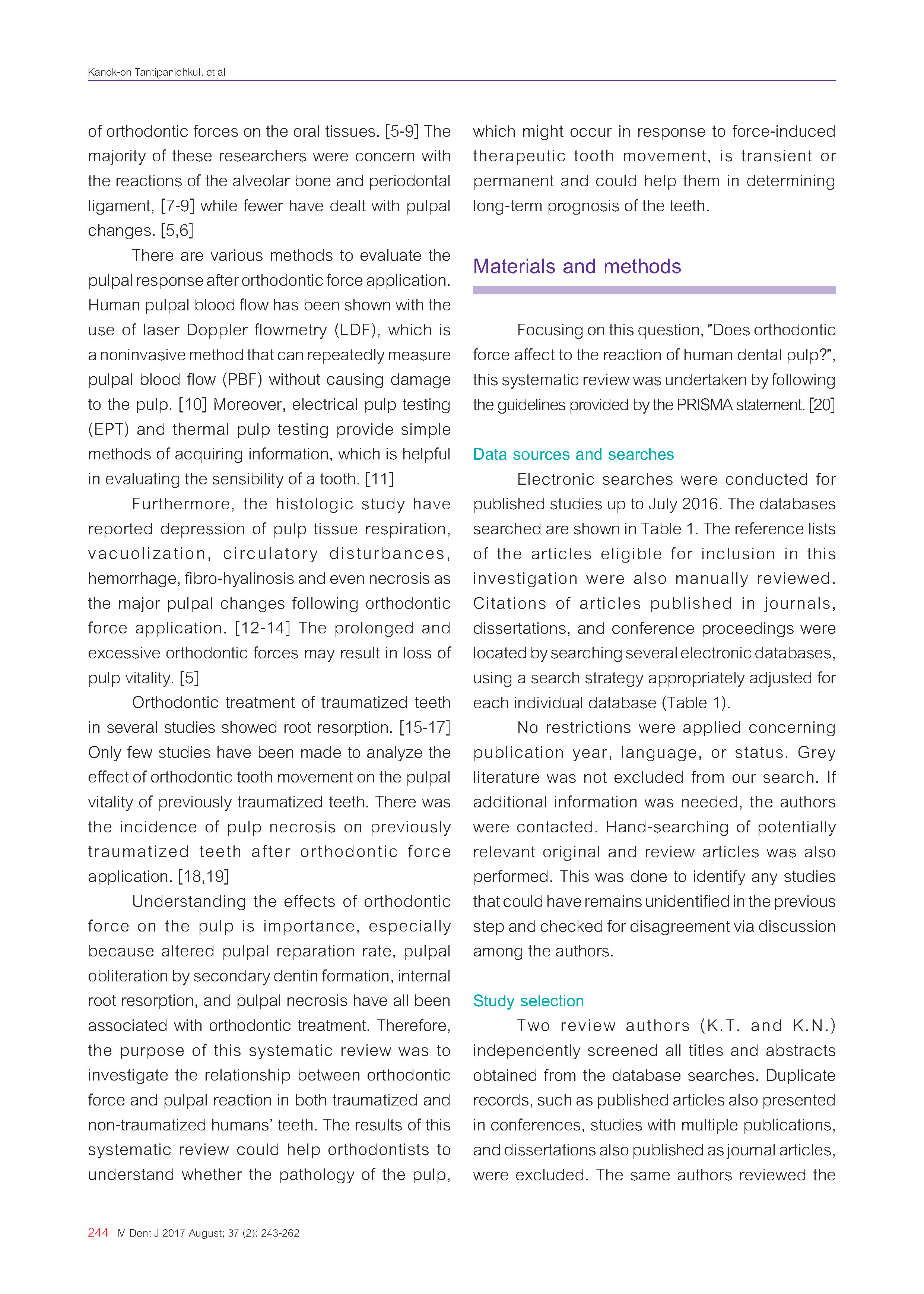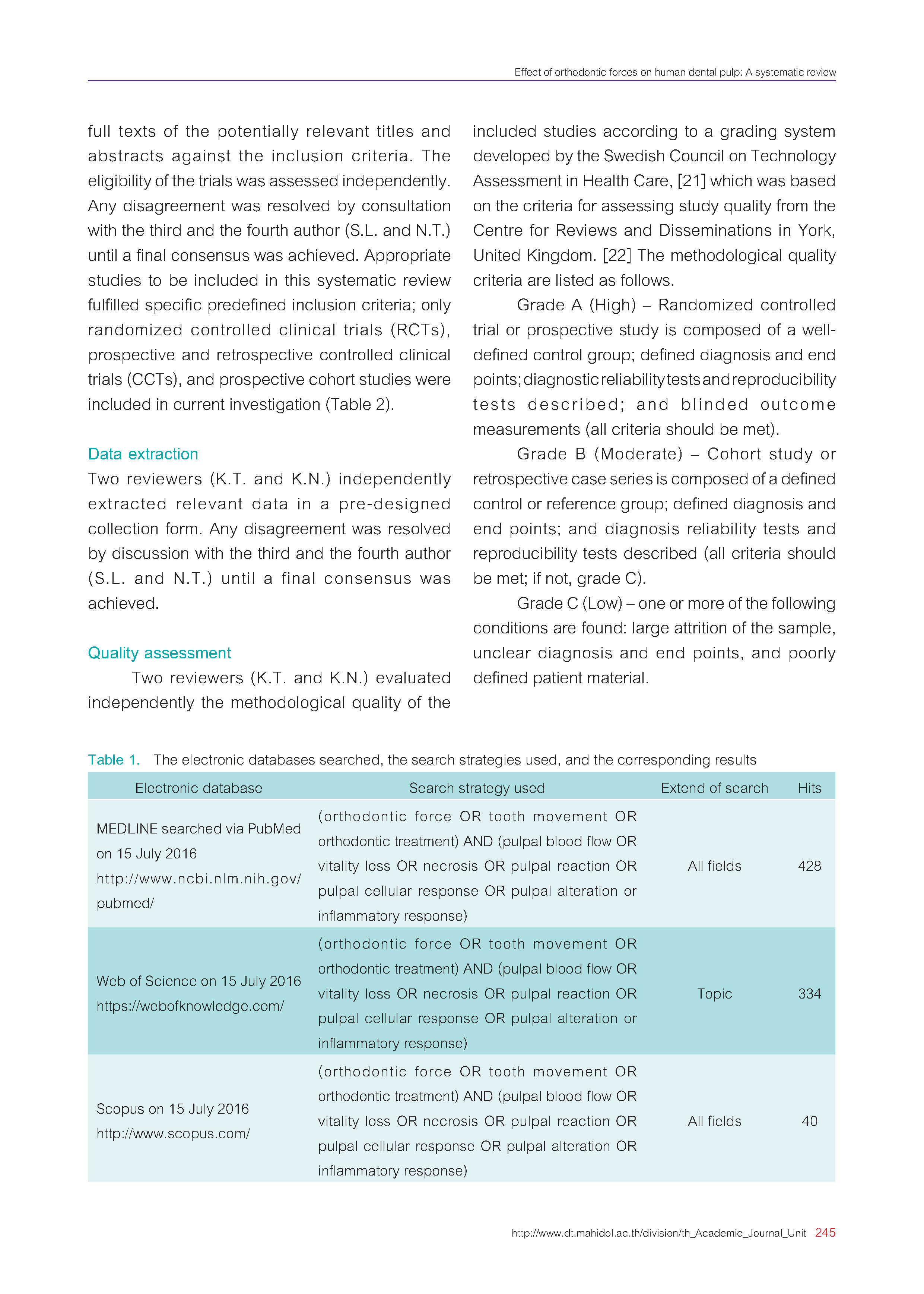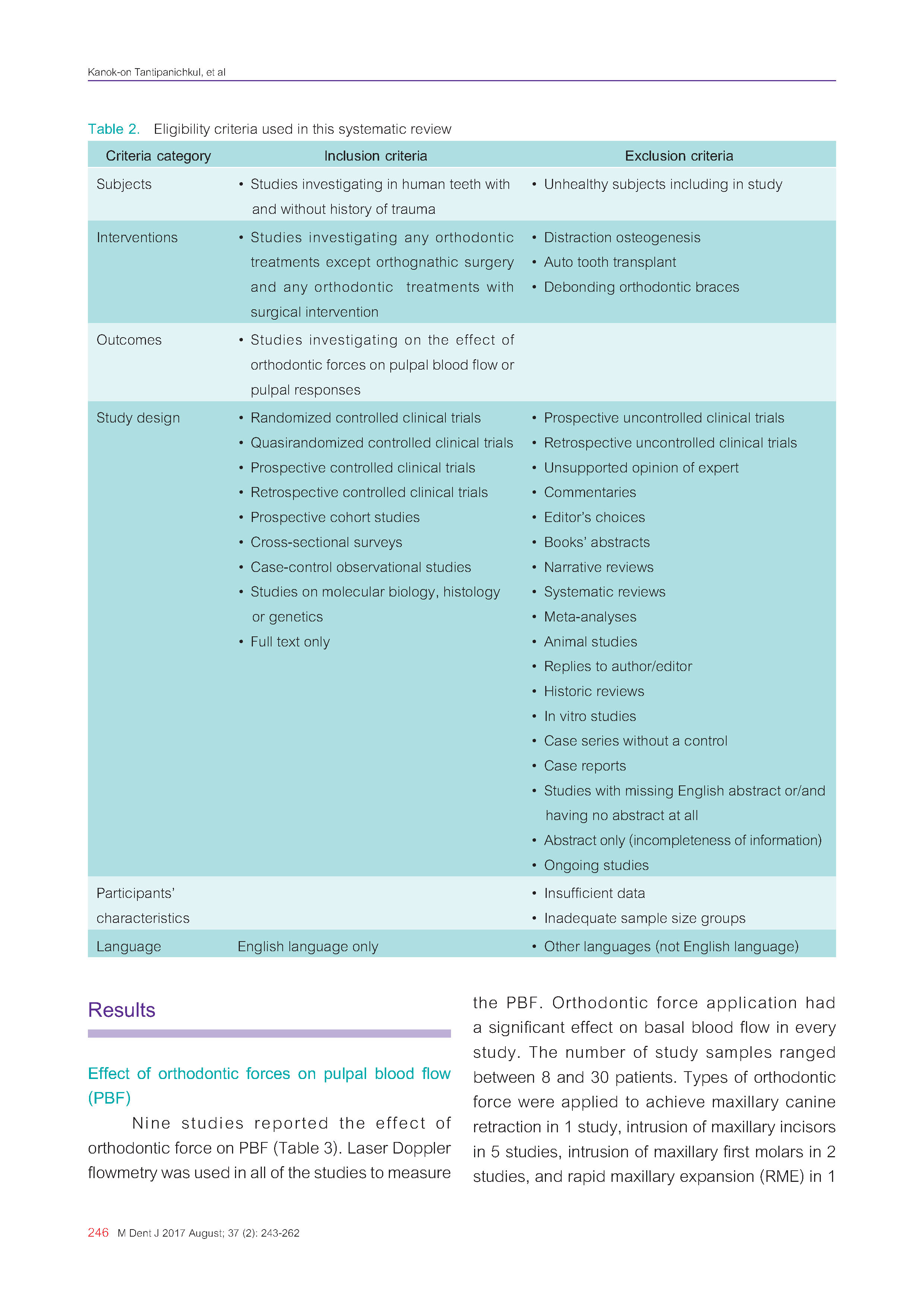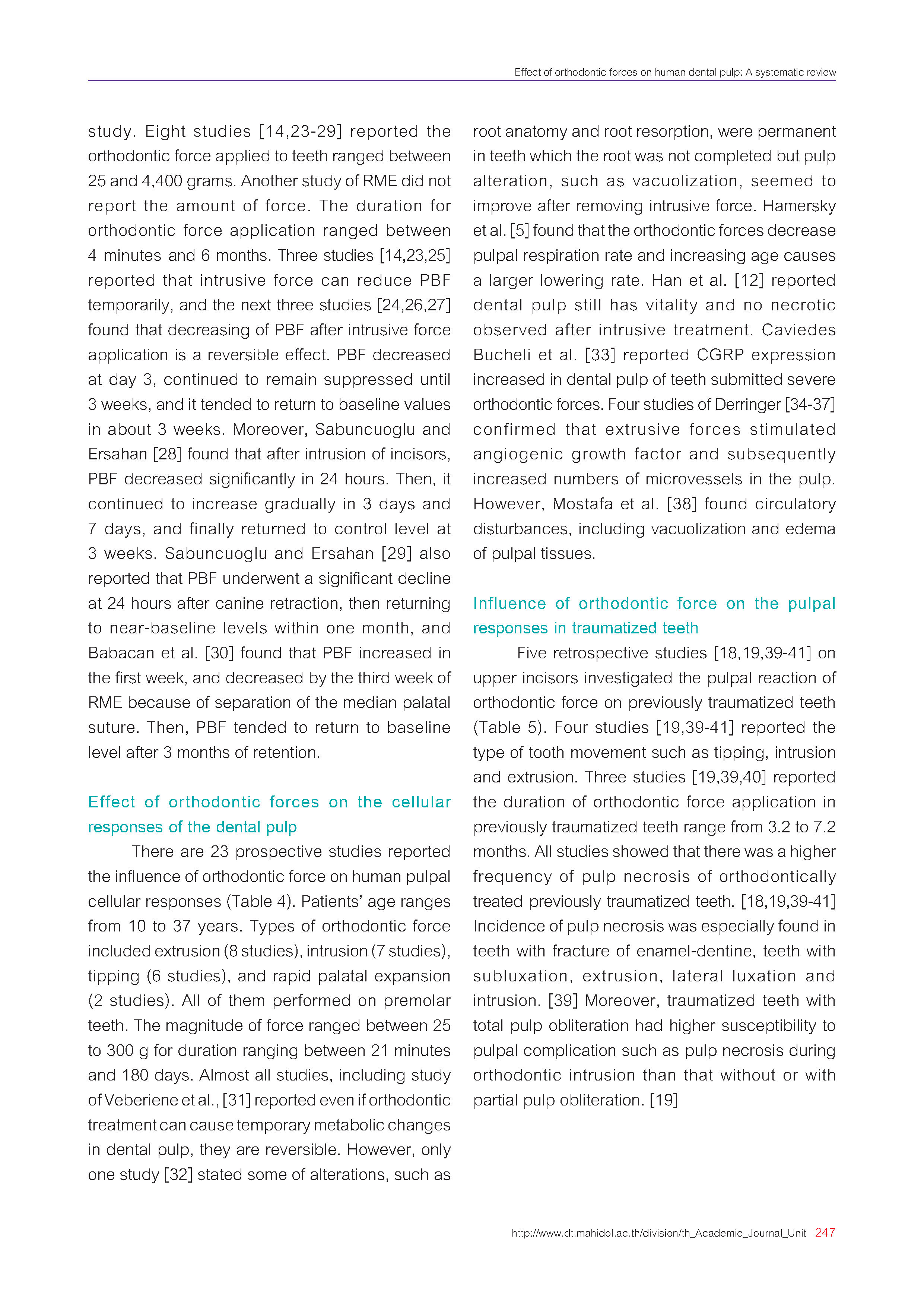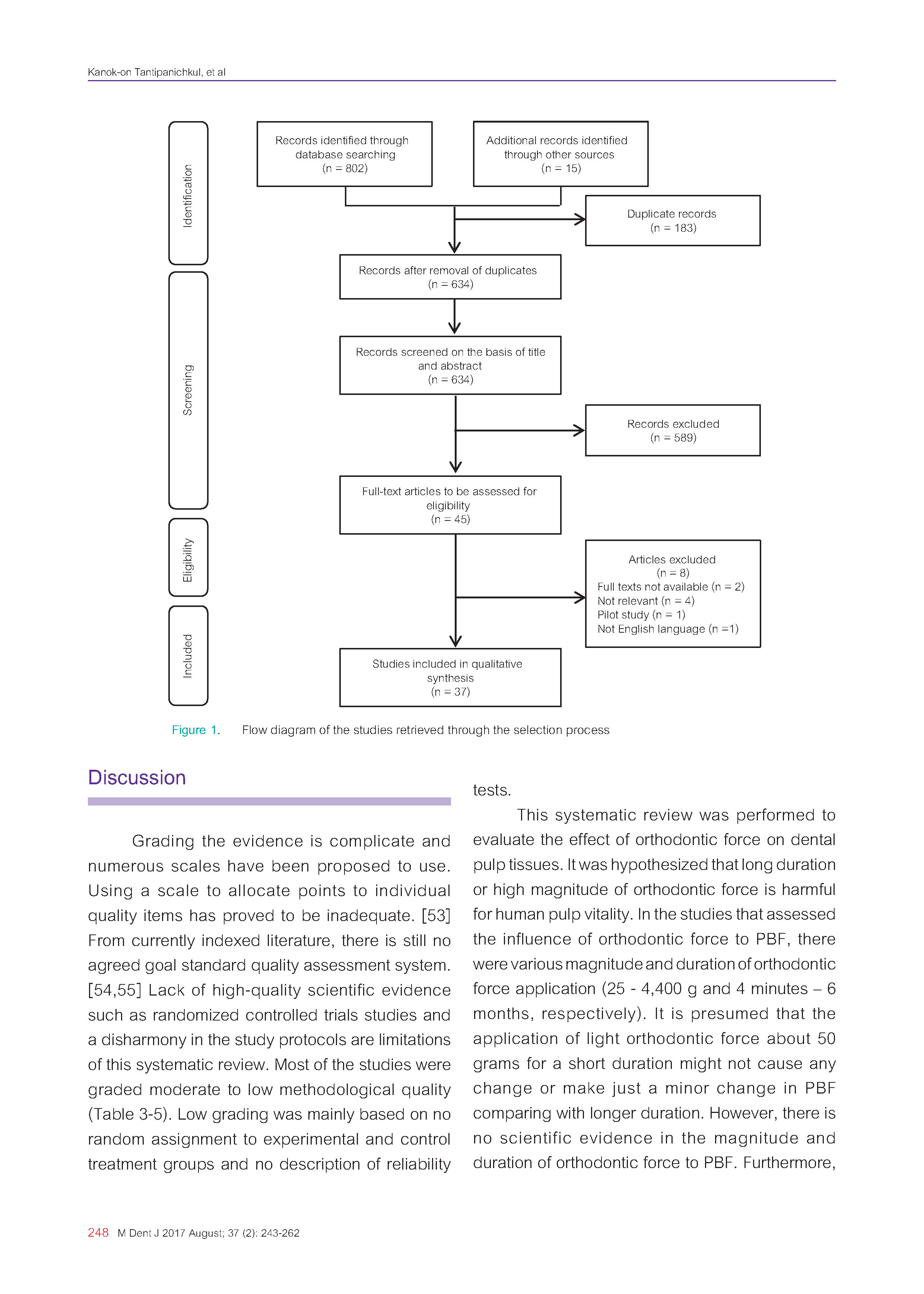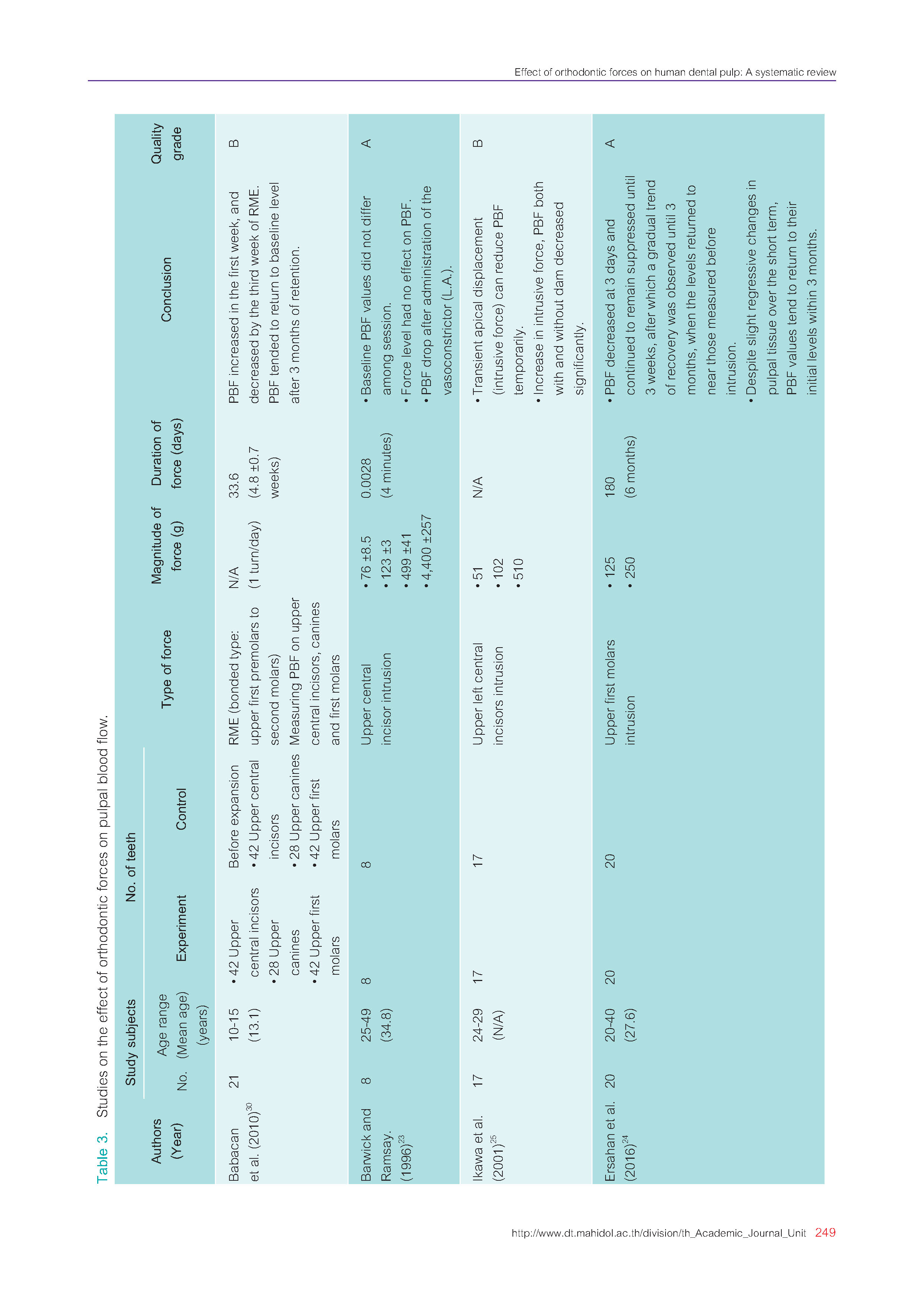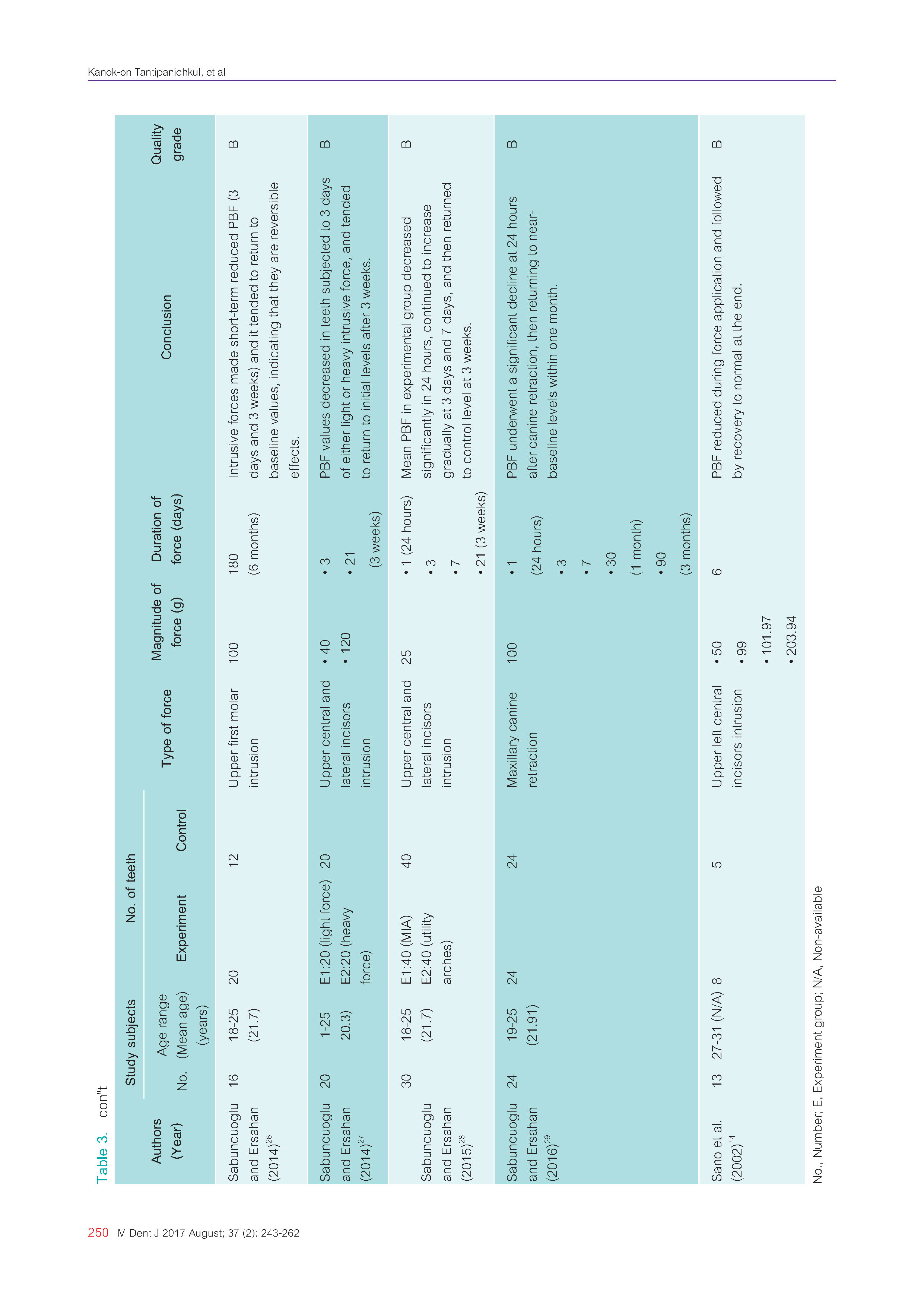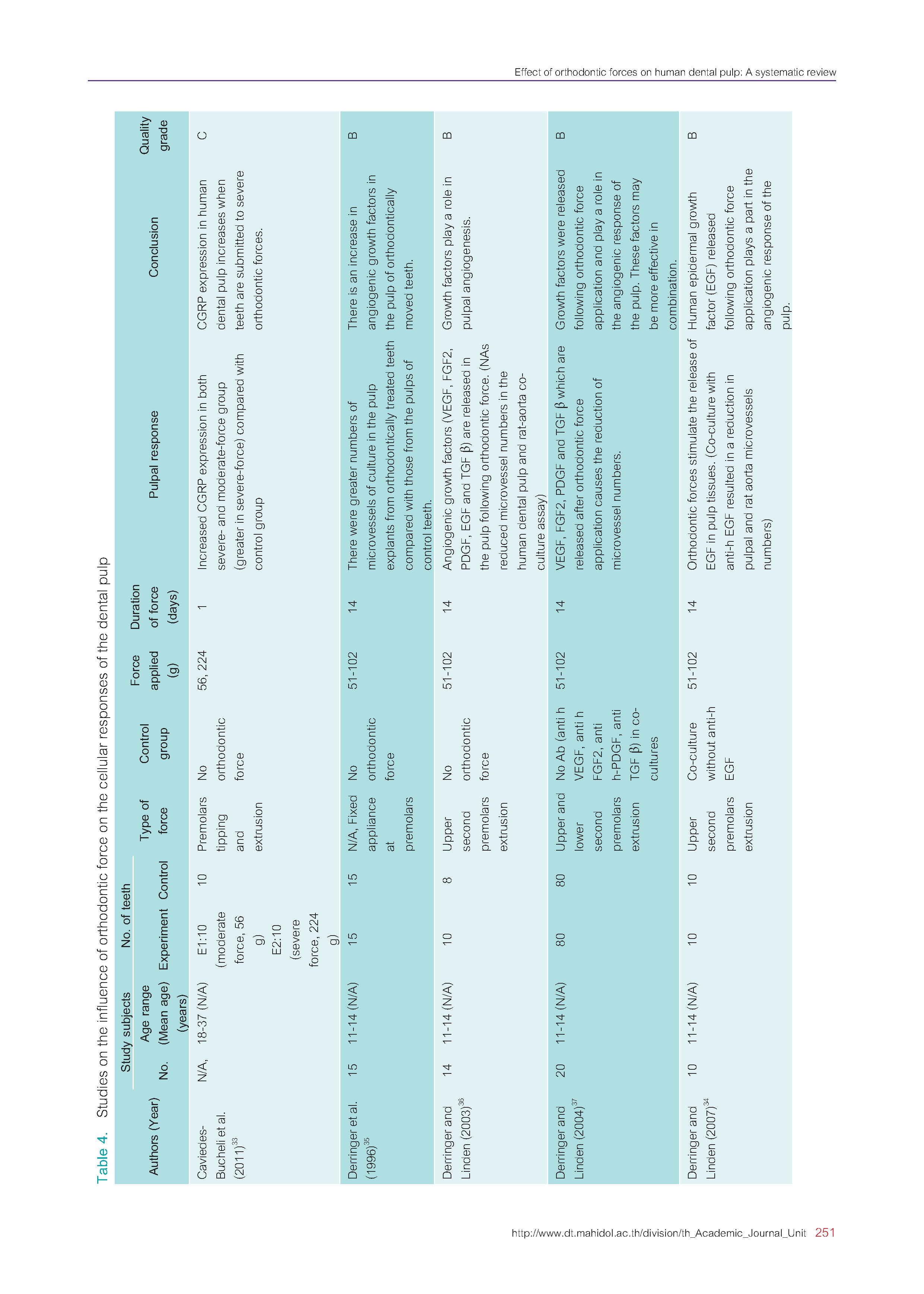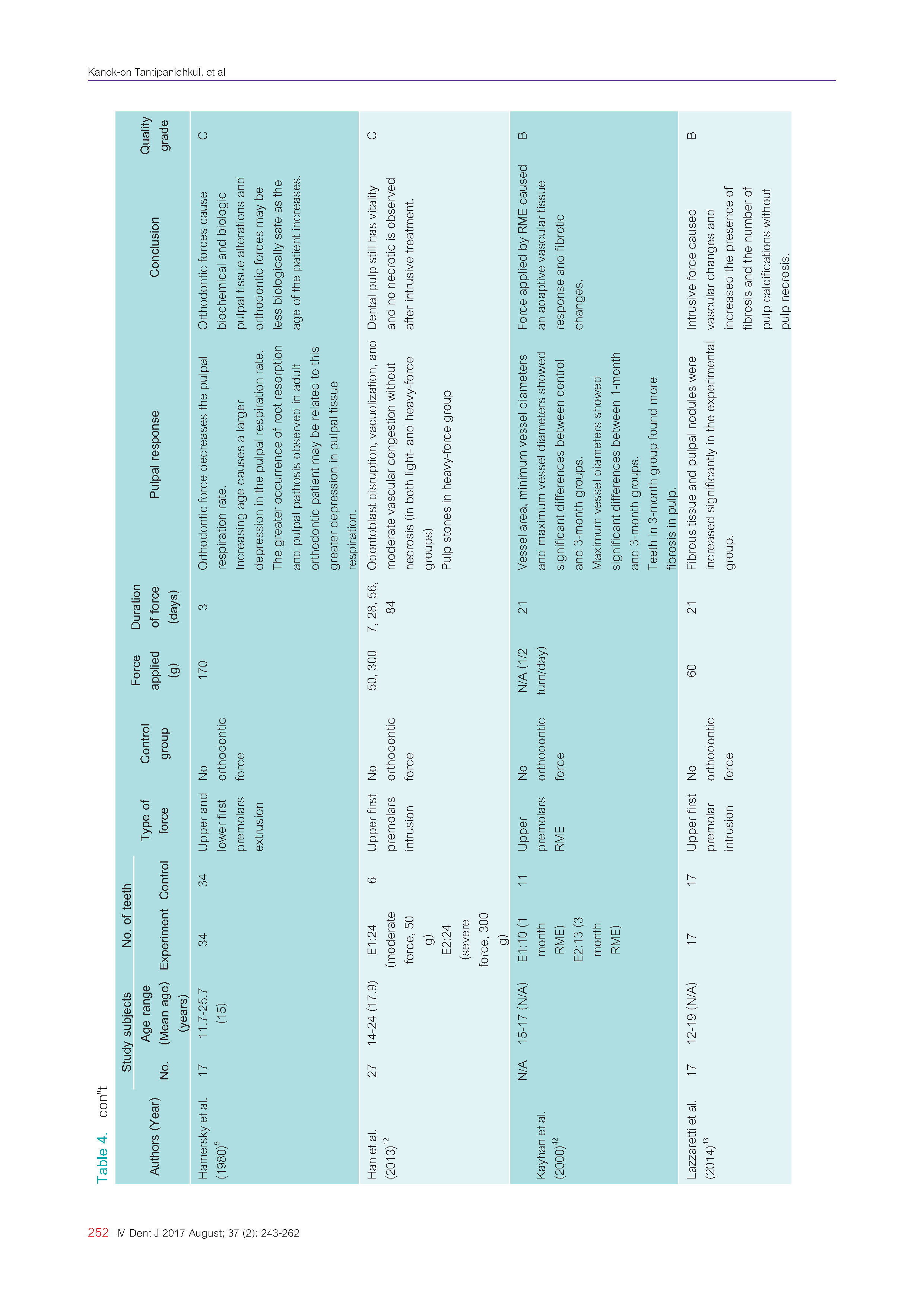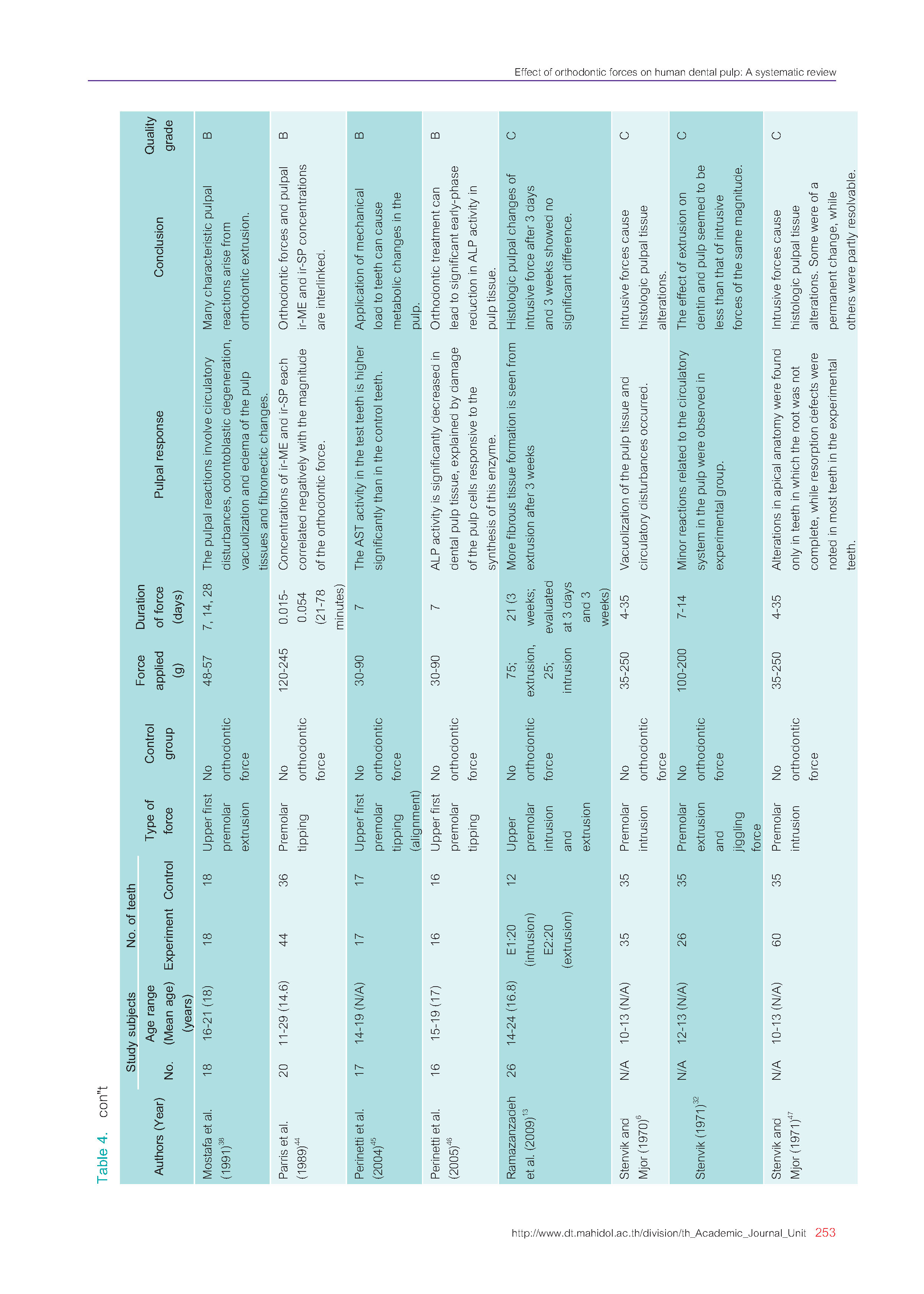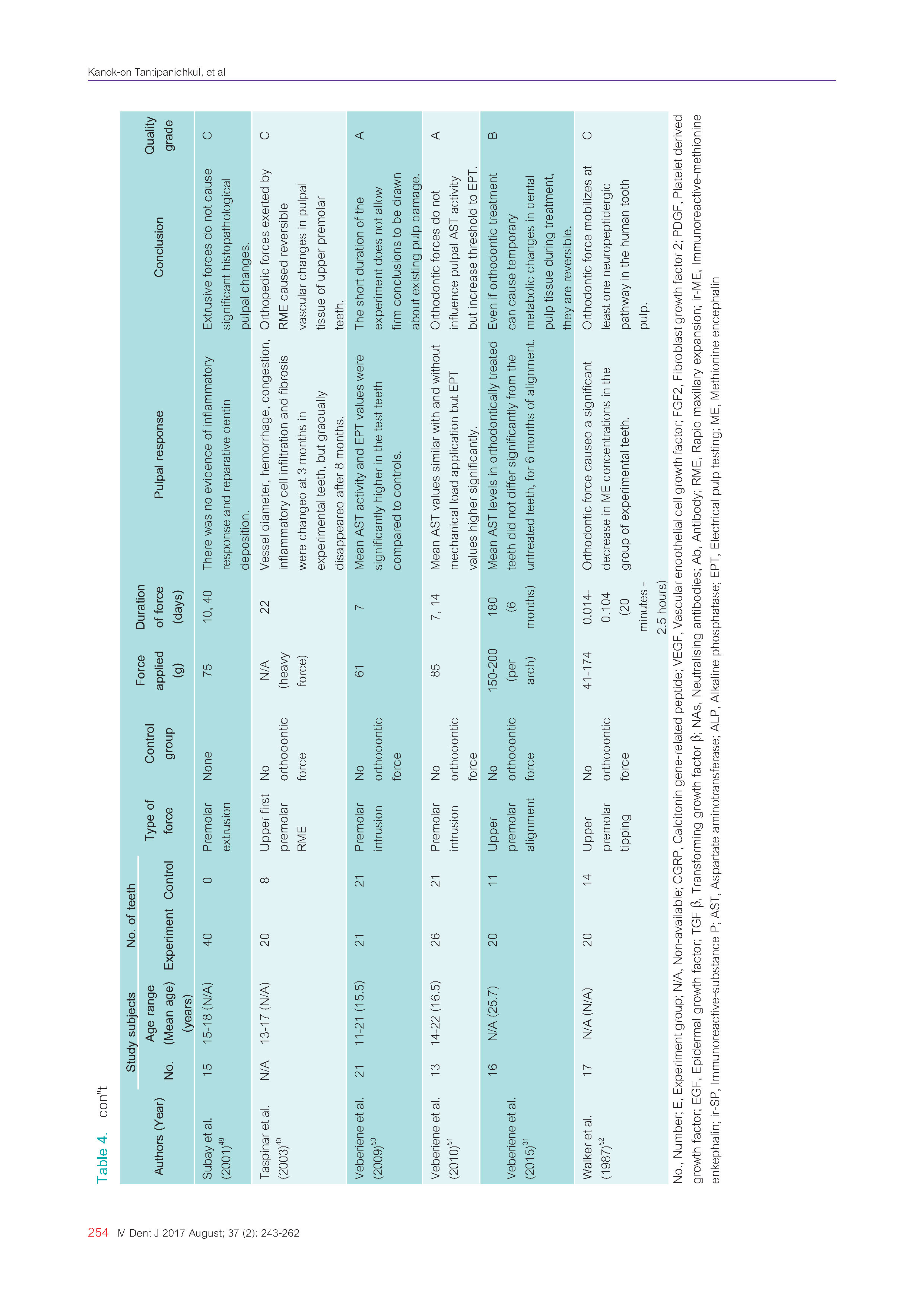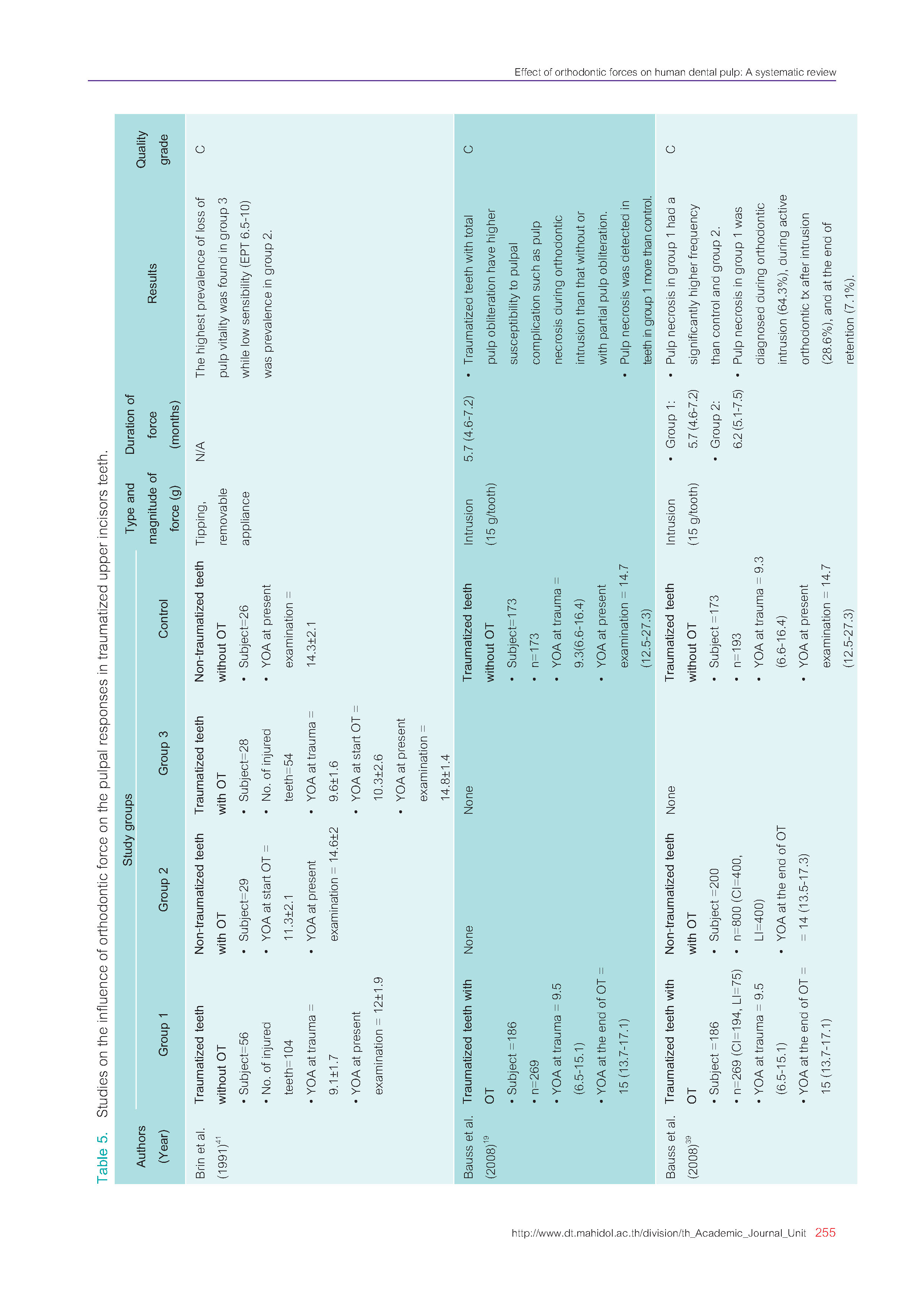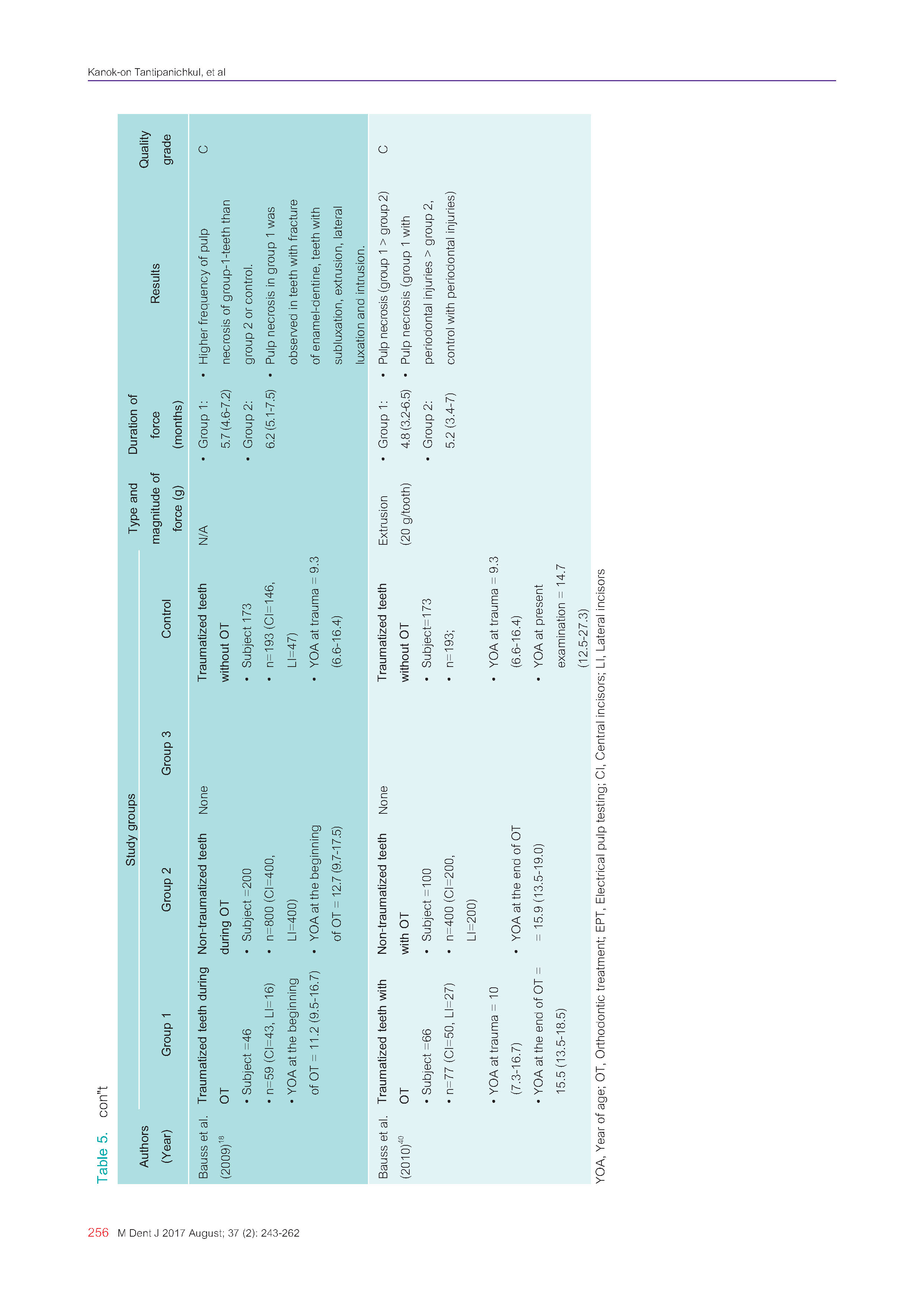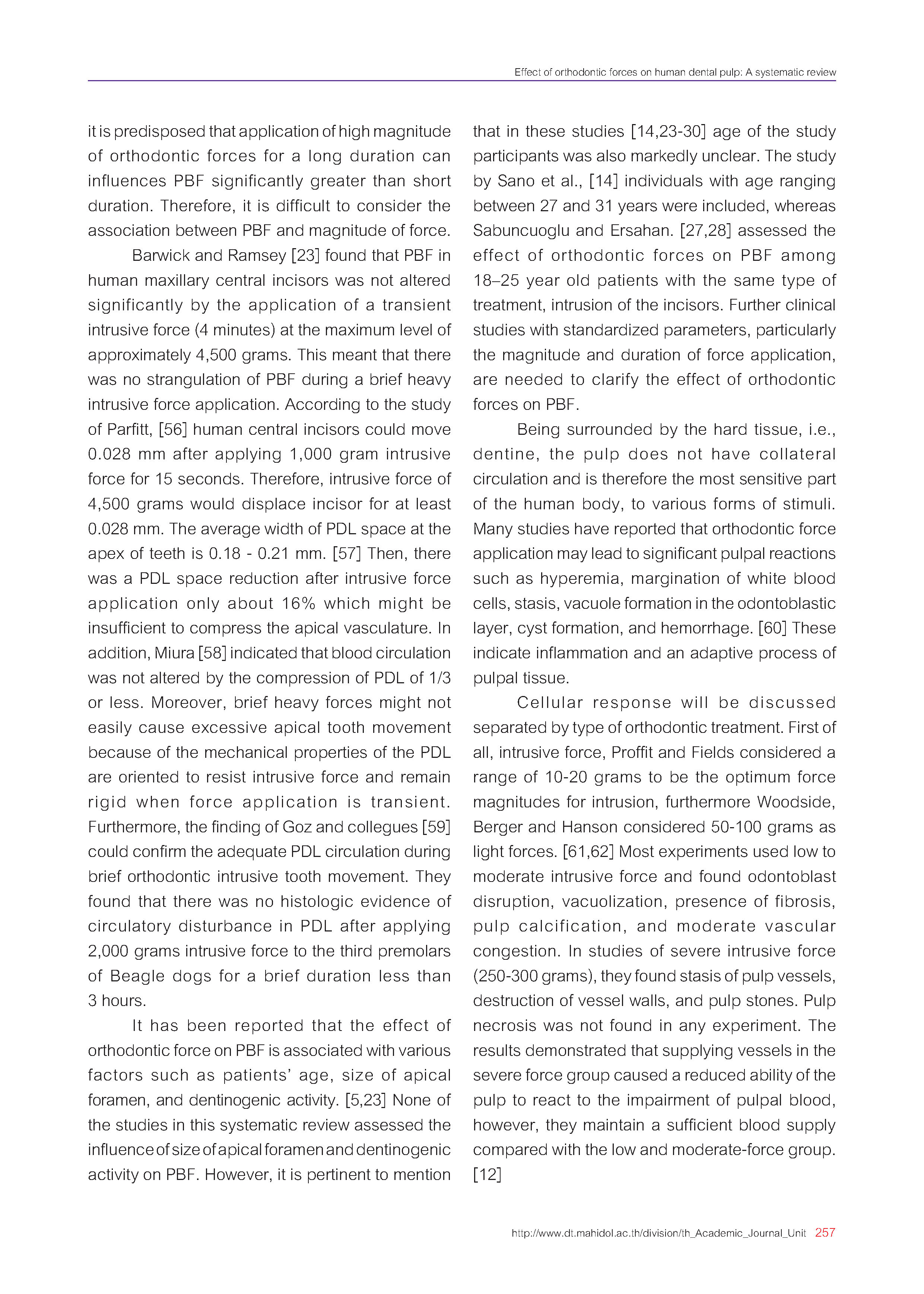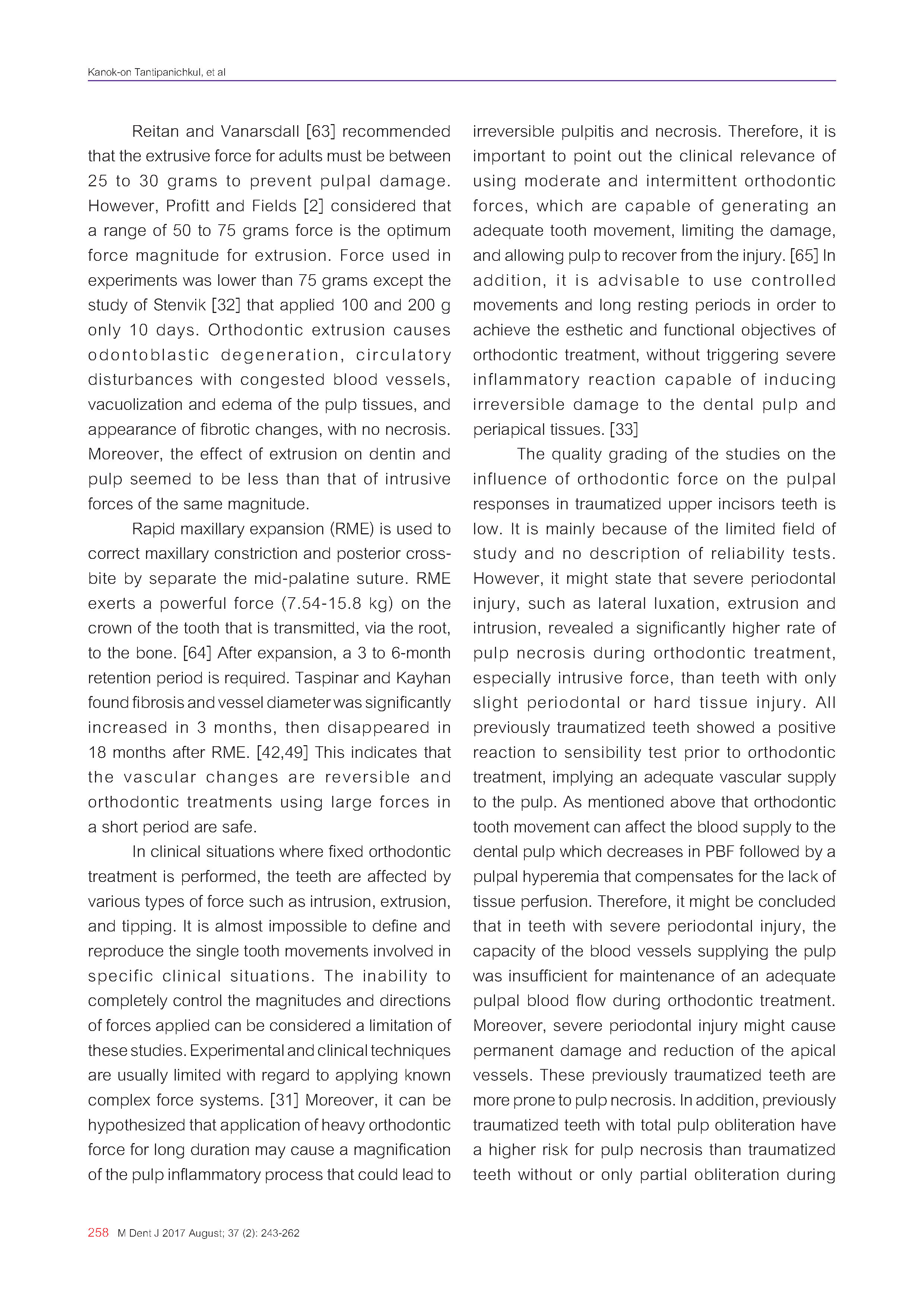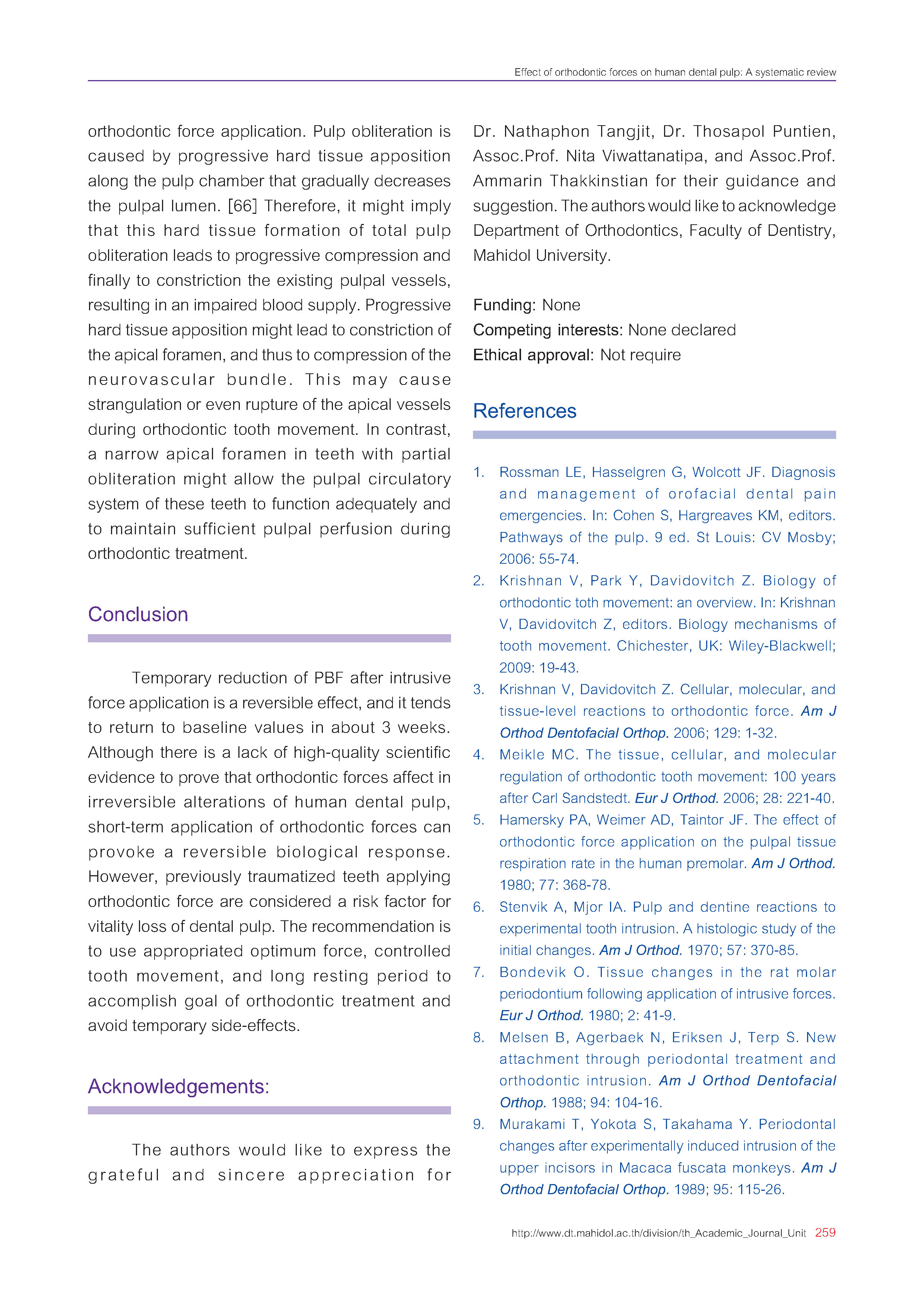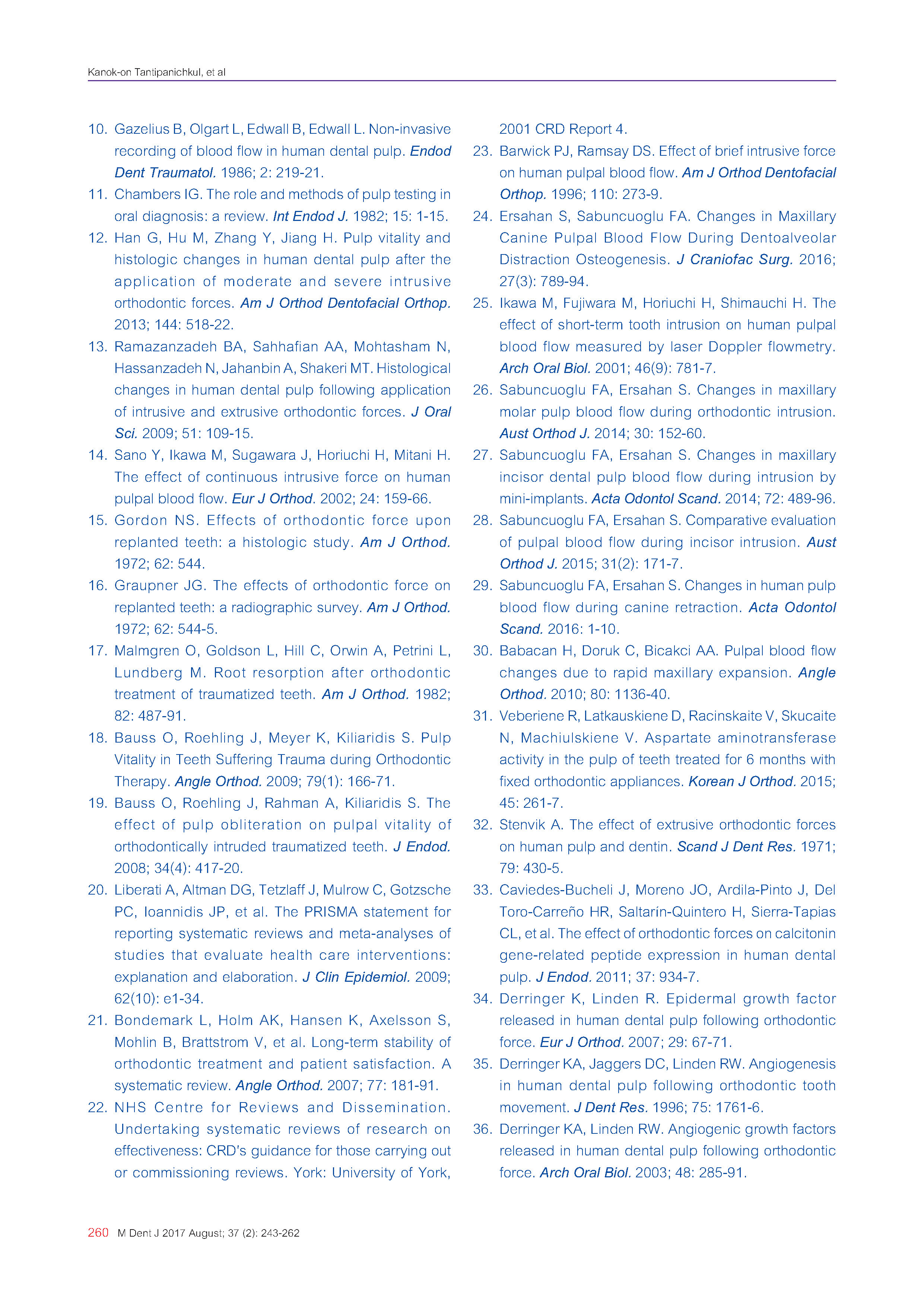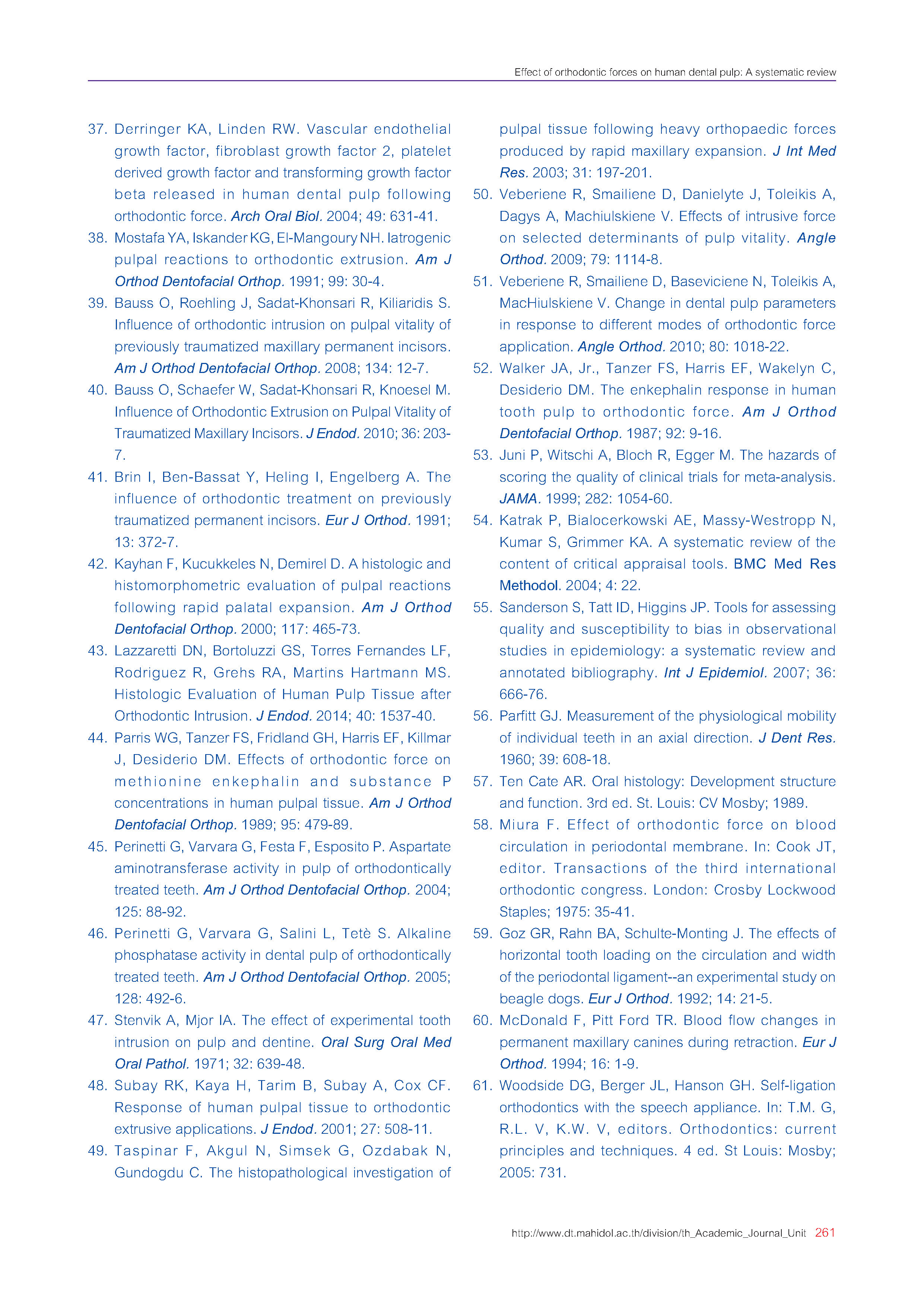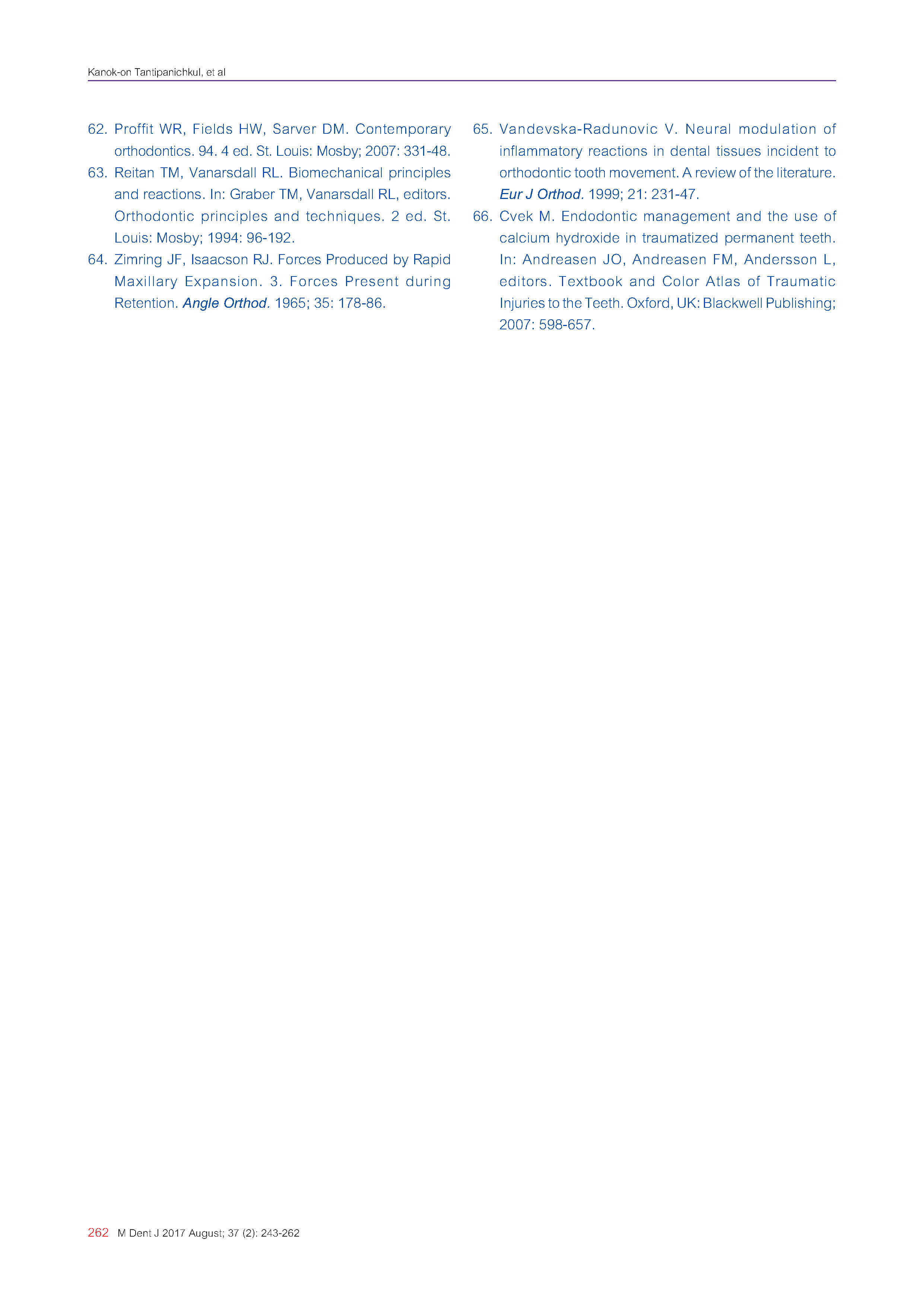บทความ
Introduction
After orthodontic tooth movement, there is a series of changes in dental pulp. Because pulpal tissue is located in a rigid dentinal cover, its vitality depends on blood vessels passing through the apical foramen. Changes in pulpal blood flow or vascular tissue pressure can endanger the health of dental pulp.[1] The pulpal response to orthodontic force involves cell damage, inflammation, and wound healing. Force application from orthodontic tooth movement evokes an acute inflammatory response in the PDL, which is presented by vasodilatation and migration of leukocytes out of the capillaries. [2] These migratory cells produce various local biochemical signal molecules and cytokines, which interact with the population of native periodontal cells. A day or 2 later, the acute phase is replaced by a chronic process involving fibroblasts, endothelial cells, osteoblasts, and alveolar bone marrow cells. During this phase, leukocytes continue to migrate into strained periodontal tissues and modulate the remodeling process. [3,4]
Many researchers have examined the effect of orthodontic forces on the oral tissues. [5-9] The majority of these researchers were concern with the reactions of the alveolar bone and periodontal ligament, [7-9] while fewer have dealt with pulpal changes. [5,6]
There are various methods to evaluate the pulpal response after orthodontic force application. Human pulpal blood flow has been shown with the use of laser Doppler flowmetry (LDF), which is a noninvasive method that can repeatedly measure pulpal blood flow (PBF) without causing damage to the pulp. [10] Moreover, electrical pulp testing (EPT) and thermal pulp testing provide simple methods of acquiring information, which is helpful in evaluating the sensibility of a tooth. [11]
Furthermore, the histologic study have reported depression of pulp tissue respiration, vacuolization, circulatory disturbances, hemorrhage, fibro-hyalinosis and even necrosis as the major pulpal changes following orthodontic force application. [12-14] The prolonged and excessive orthodontic forces may result in loss of pulp vitality. [5]
Orthodontic treatment of traumatized teeth in several studies showed root resorption. [15-17] Only few studies have been made to analyze the effect of orthodontic tooth movement on the pulpal vitality of previously traumatized teeth. There was the incidence of pulp necrosis on previously traumatized teeth after orthodontic force application. [18,19]
Understanding the effects of orthodontic force on the pulp is importance, especially because altered pulpal reparation rate, pulpal obliteration by secondary dentin formation, internal root resorption, and pulpal necrosis have all been associated with orthodontic treatment. Therefore, the purpose of this systematic review was to investigate the relationship between orthodontic force and pulpal reaction in both traumatized and non-traumatized humans’ teeth. The results of this systematic review could help orthodontists to understand whether the pathology of the pulp, which might occur in response to force-induced therapeutic tooth movement, is transient or permanent and could help them in determining long-term prognosis of the teeth.

